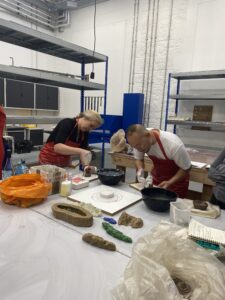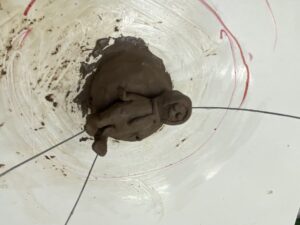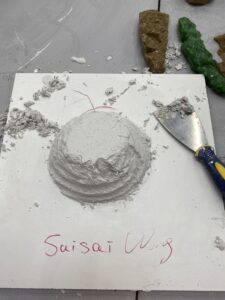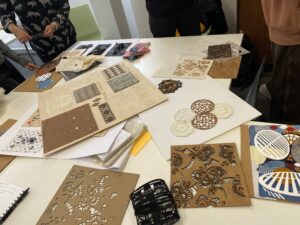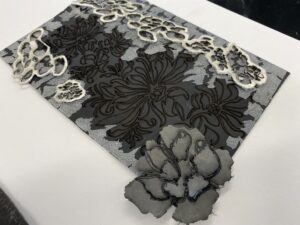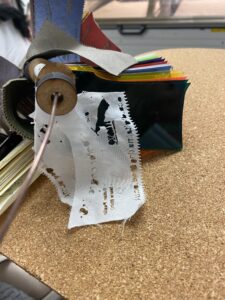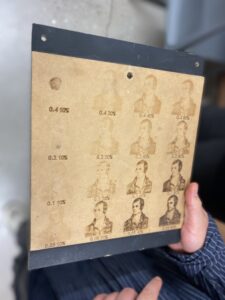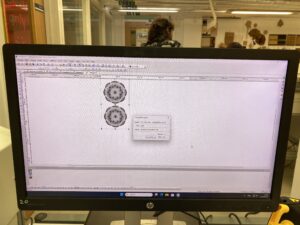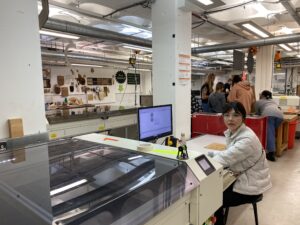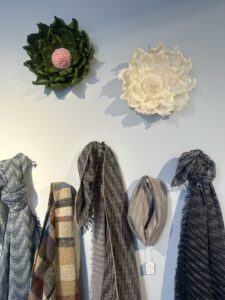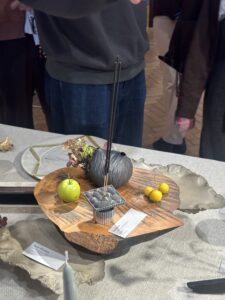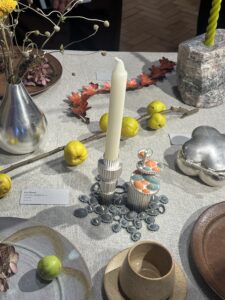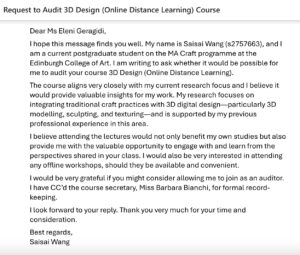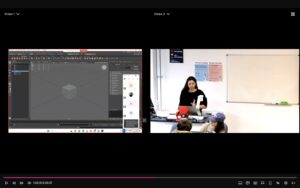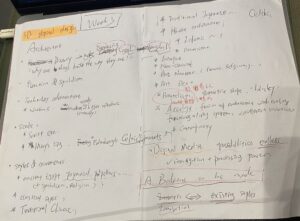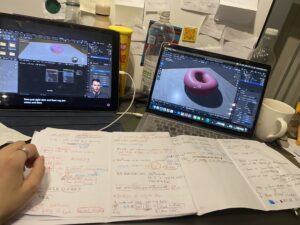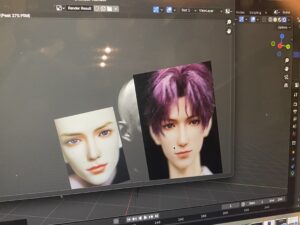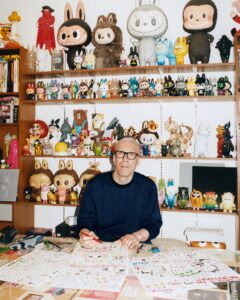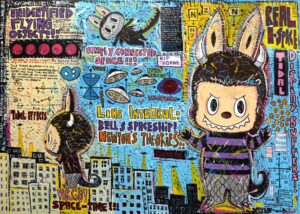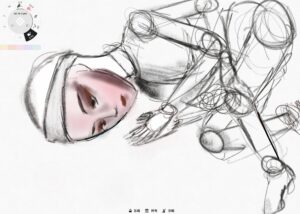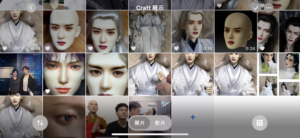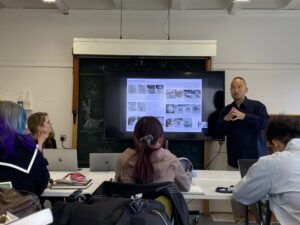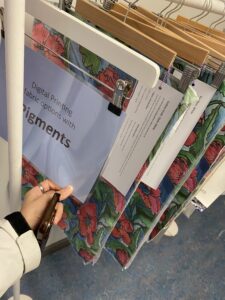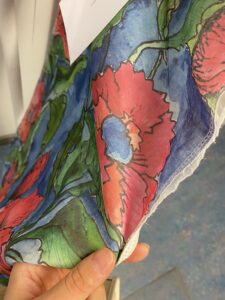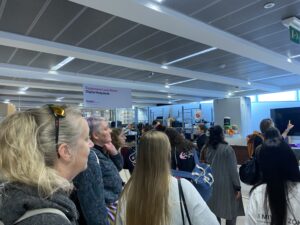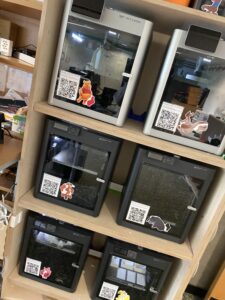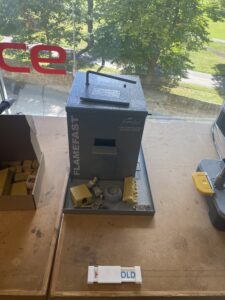Review of the Book Post-Craft
- Brief review of Chapter 4, “ MADE IN CHINA/ CREATED IN CHINA CATHARINE ROSSI”
The chapter examines the complexities and contradictions of Chinese manufacturing, emphasizing the human and ethical dimensions often overshadowed by industrial scale and economic progress. Pieces like Ai Weiwei’s Sunflower Seeds and Cohen & Van Balen’s 75 Watt highlight the human labor behind mass production, portraying individual craftsmen not merely as anonymous producers but as agents of cultural symbolism and societal shifts. For instance, Sunflower Seeds underscores the craftsmanship involved in creating each porcelain seed, subtly critiquing the disparity between the artist’s symbolic intent and the factory workers’ potentially hazardous labor conditions. Similarly, 75 Watt employs a staged assembly line involving real workers, blurring boundaries between their physical engagement and the industrial spectacle, thereby amplifying their agency and vulnerability within global supply chains. Yet, these works also expose a paradox: the individual worker’s role appears both pivotal—embodying the craftsmanship, agency, and cultural identity—and marginalized, subject to exploitative labor practices. The artworks challenge viewers to reconsider the often romanticized notion of the artisan by revealing the socio-economic inequalities, environmental harms, and cultural implications embedded in production processes. Ultimately, these projects insist that individual laborers are central to understanding China’s manufacturing ethos—not as mere cogs but as active, consequential participants in a global narrative of craft, critique, and economic transformation.
- Brief review of Post-Craft Chapter 2, “Craft Rather Than Crafted” :
This chapter focuses on the distinction between “craft” and “crafted.” The author argues that while traditional craft emphasizes skill, knowledge transfer, and mastery, in contemporary contexts, craft has increasingly become a tool for social and political expression. The chapter highlights how many practitioners today prefer “craft” as a spirit of experimentation and exploration, rather than perfection. For example, Artschwager’s use of Formica to challenge traditional woodworking reflects a critical and disruptive attitude. This form of “craft,” though seemingly chaotic and accidental, emphasizes the process of exploration and reflection, rather than adhering to classical standards of perfection. This shift underscores the flexibility and openness of craft, transforming it from mere technique into a cultural, social, and political act. Overall, the chapter offers a fresh perspective on “craft,” emphasizing its multifaceted roles in modern society.
A short case study and Reflection:
- Case Study – Ryo Yoshida and the Expanded Field of BJD Craft
Ryo Yoshida, co-founder of the Japanese company Volks and creator of the Super Dollfie BJD line, is a key figure showing how craft has evolved into an expanded field. Yoshida combines traditional sculpting and hand-finishing skills with digital tools such as 3D modelling, CNC milling, and resin casting. While each doll retains a strong sense of handcraft through hand-painted faces, customized outfits, and narrative character design, the use of modern technologies enables greater precision, modularity, and accessibility. This hybrid approach allows BJD dolls to exist not just as handmade art objects but as part of a global creative culture that bridges craft, fashion, storytelling, and technology.
This week’s lecture deepened my understanding of the relationship between technology, industrial processes, and craft. I used to question whether industrialization might conflict with the handmade essence of craft, but the discussion strengthened my perspective and confidence in my own research direction. I believe that technology should be actively embraced and harnessed to serve human creativity ,enabling craft to reach wider audiences while preserving its handmade spirit. Emerging industrial techniques, such as 3D printing, demonstrate this potential well.
But I believe that the current crafting techniques of BJD or figurine dolls still have room for innovation, improvement, and greater sustainability, and I already have some ideas that I have been developing and experimenting with in my own practice.
As I mentioned in previous homework tasks, I’m trying to integrate IML techniques from the fields of plastics and automotive manufacturing, 3D design, fine arts, and 3D printing — a combination of all these — into doll crafting. This is a completely new and non-traditional approach, but I am still experimenting with it. If it works , it will significantly enhance crafting efficiency while preserving the handcrafted quality and aesthetics.
But even for now, our contemporary BJD crafting has already blurred disciplinary boundaries across jewellery, textiles, 3D design, fine arts, and even human anatomy.
Personally I particularly want to explore 3D digital design, IML (in-mold labeling) techniques in plastics, costume making, and some related knowledge in engineering.
Regarding social and cultural issues, I am particularly interested in exploring feminism, social evolution, and gender equality through doll making and practice using narrative approaches.
